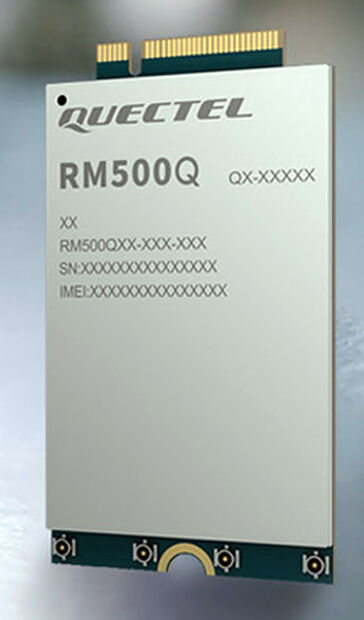Quectel, Fibocom and Telit lead in IoT cellular modules
- June 21, 2023
- Steve Rogerson

Quectel, Fibocom, Sierra Wireless, Sunsea AIoT and Telit hold a 69 per cent share of the cellular IoT module market in terms of revenues, according to Berg Insight.
Annual shipments of cellular IoT modules amounted to 427 million units in 2022, flat from the previous year. Annual sales grew 12 per cent and amounted to $5.9bn in the year.
The industry has seen a wave of consolidation recently with Telit acquiring the Cinterion line of IoT products and services from Thales, Semtech acquiring Sierra Wireless and Fibocom consolidating its ownership in Rolling Wireless.
The 4G LTE technologies dominate the cellular IoT technology landscape as LTE Cat-1, NB-IoT and LTE-M replace 2G and 3G technologies in the low to mid market segments. LTE Cat-1 modules account for a major share of volume across all regions.
In China, modules based on chipsets from domestic suppliers, supporting the single antenna version LTE Cat-1 bis, are roughly half the price at $10 compared with standard LTE Cat-1 modules. In large tenders, prices for LTE Cat-1 bis modules have even dropped below $5 per unit. Adoption of LTE Cat-1 in the country comes somewhat at the expense of NB-IoT shipments that recorded a year-on-year decline.
Similar to the previous year, NB-IoT module shipments were largely confined to China. Internationally, NB-IoT module shipments are in the single-digit millions with demand primarily driven by smart gas and water meter deployments.
LTE-M was the fastest growing technology in 2022 and is viewed as an attractive option for IoT devices with stricter requirements on power consumption and long lifecycle. As both LTE-M and NB-IoT are 5G-ready, they are suitable for IoT devices that will stay in the field for more than ten years, which may prove critical as mobile operators in advanced markets will start to sunset their 4G LTE networks near the end of the decade.
LTE-M module shipments far exceed NB-IoT shipments outside of China. The ability to perform over-the-air software upgrades of LTE-M devices has proven to be the key factor for the technology’s success compared with NB-IoT.
5G is starting to replace high-speed 4G LTE variants across product categories such as connected cars, CPEs and IoT gateways, though 5G module shipments were limited to less than ten million units in 2022.
The first chipset supporting the 5G redcap specification was launched in early 2023. 5G redcap chipsets are less complex and expensive compared with 5G eMBB-capable chipsets and will function as a replacement for LTE Cat-4 and LTE Cat-6 chipsets, supporting use cases with requirements for data rates below 300Mbit/s. 5G redcap modules are currently available in samples and are expected to sell for about double the price of LTE Cat-4 modules.
Berg Insight believes uptake of the technology will be small in the short-term due to the price gap and limited number of chipset providers as well as the requirement for 5G SA network coverage. Nevertheless, early 5G redcap adopters will likely be providers of high-end IoT devices such as wearables, telematics gateways, industrial meters and alarm panels.




